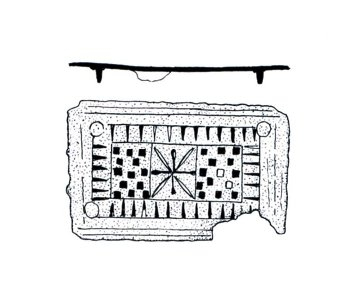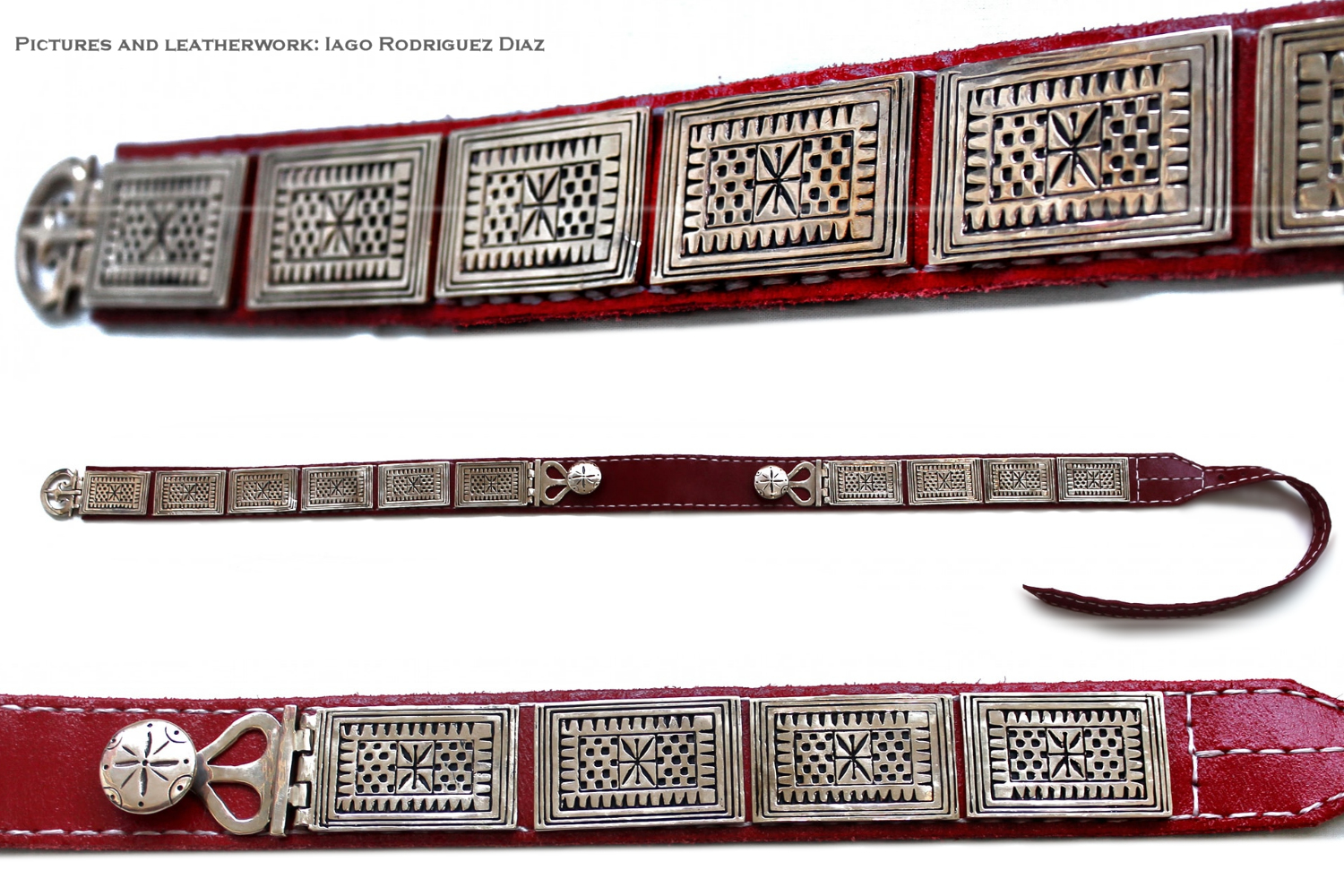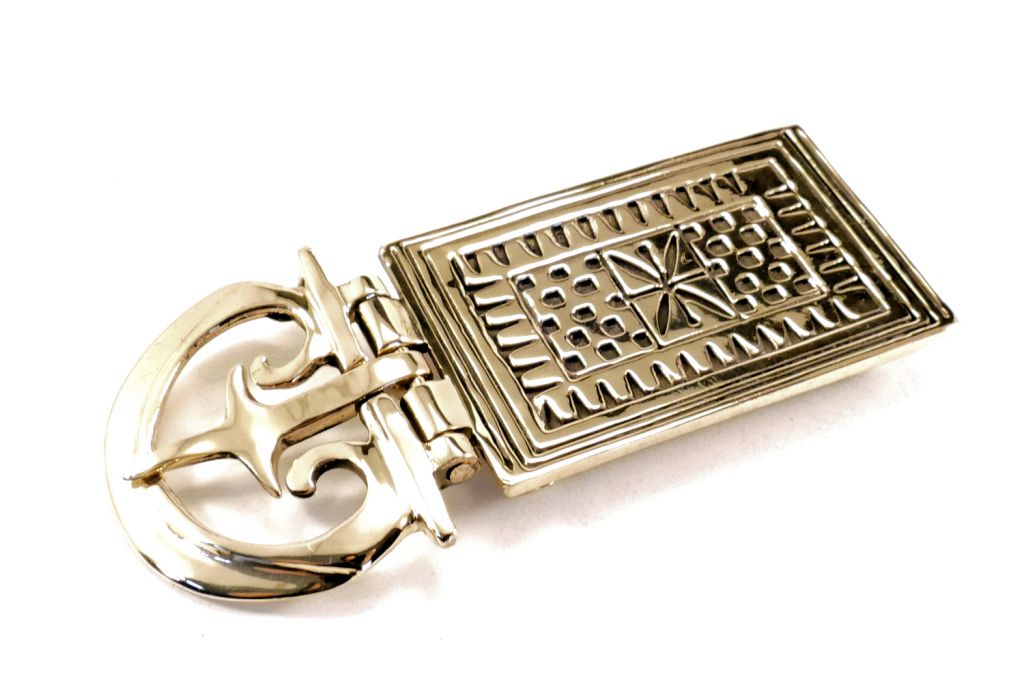Roman Belt Buckle Vindonissa, Bronze
Roman Military buckle, based on finds from Vindonissa / Switzerland. The plates with geometric pattern and black inlays date to the 2nd half of the 1st century, likely to the flavian era.
Römische Schnalle Vindonissa, Bronze
Roman military buckle, based on a find from Vindonissa / Switzerland. The plates with geometric pattern and black inlays date to the 2nd half of the 1st century, likely to the flavian era. The plate is made after cat. no. 1017. The pattern is blackened, but enamel inlays are also available by extra charge. The plate is easy to assemble to the belt with integral mushroom shaped knobs. Handcrafted from bronze.

Literatur:
Chr. Unz & E. Deschler-Erb, Katalog der Militaria von Vindonissa, Brugg 1997
The Roman Military Belt
The roman soldier distinguished from civilians by wearing a special dress, marking him even without his weapons. In civilian context belt decorations from metal are very rare, but linked with military sites the number and variety of finds is quite huge. The military belt decorations were a symbol of status and profession as well. Like other parts of the equipment, also the size and shape of the belt fittings was influenced by the fashion of it´s time.
Traditional the roman miltary belt is called "cingulum militare", but this term did not appear before the 3rd century. Earlier sources call the decorated belt as "balteum militare", even when the phrase "balteum" refers to the sword belt in later times.
Comparing ancient tombstones with depicted legionarys and auxilliaries, the change of the fashion is clearly visible. In the early 1st century, the soldiers wore two belts crossed in front of the body. At one belt served to support the short sword (gladius), the other fastened the dagger (pugio). This early plates were usually narrow and were either left plain or decorated with black inlays from enamel or niello. Vegetal or geometrical designs were preferred, but some plates were also decorated with embossed zoomorphic designs.
During the 1st century, a certain design of embossed plates with boss and concentric rings became increasingly popular. At the same time also the weapon fashion changed from the broad gladius-type Mainz to the smaller sword of the type Pompei. The later swords were now often worn at a baldric over the shoulder, so one belt became unnecessary. It disappeared, and the single pugio belt was decorated with broader plates by now. The pugio was attached to certain dagger frogs hinged to a belt plate.
Only a few sets were discovered completely, but it seems as if the belt was not always covered by plates all around.
At the age of the emperors Trajan and Hadrian some new changes appeared. There are much less finds of the early 2nd century, but it is clearly visible, that the broad, embossed plates did not survive for a long time in this period. The new fashion is also visible at the brooches, which were increasingly decorated with enamel inlays. The new belt fittings were much smaller and very coloured, mostly decorated in geometrical designs. It seems, as if the pugio did not belong to the soldiers equipment any more, at least there are now definite finds of this period. Also dagger frogs are missing which could be an indirect proof.
After the mid of the 2nd century the fashion changed again. The so-called "Antoninian Revolution" influenced the soldier´s equipment basicly. The narrow belt fiitings, now with openwork decorations or in trumpet style, were still in use, but at the end of the 2nd century some completely new designs of military belts with ring - or frame-buckles emerged.

| Delivery time | 3-4 weeks |
|---|---|
| weight | 0.040000 |
| Era | Romans |
| Material | Bronze |
| Kind of replica | Belt Buckles and Fittings |
| scope of delivery | With rivets and instructions, ready to assemble. |

